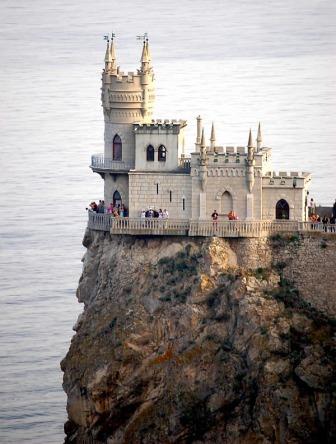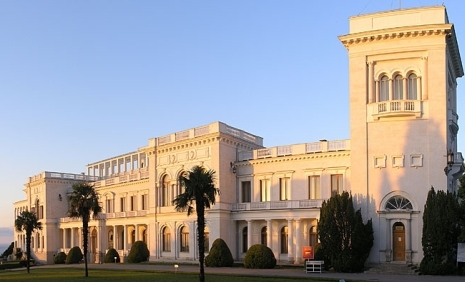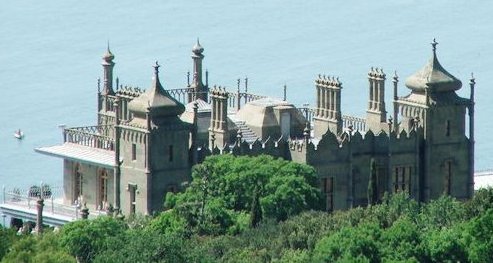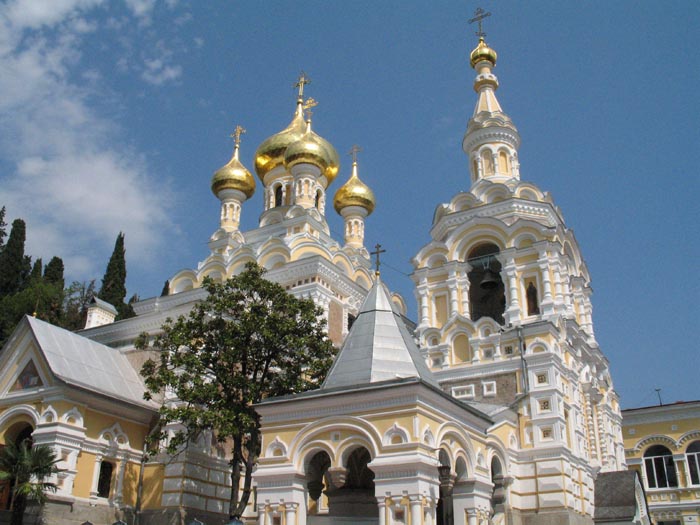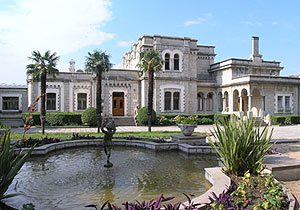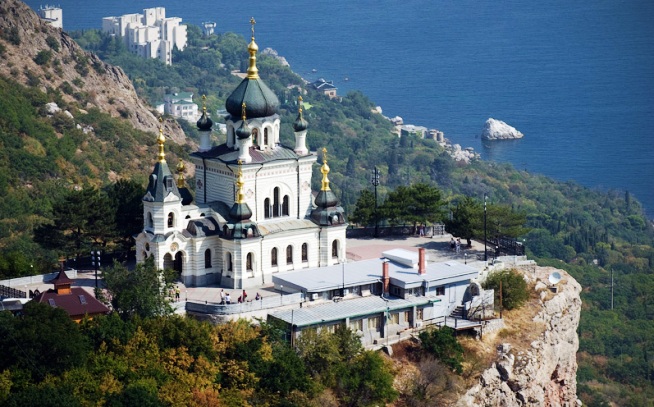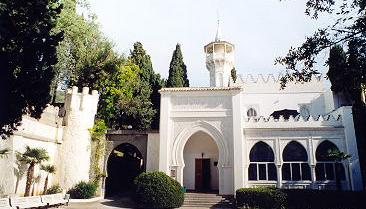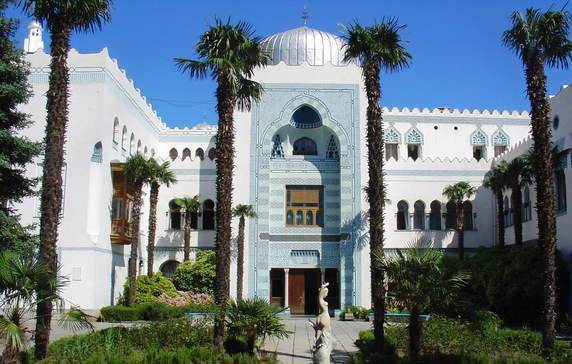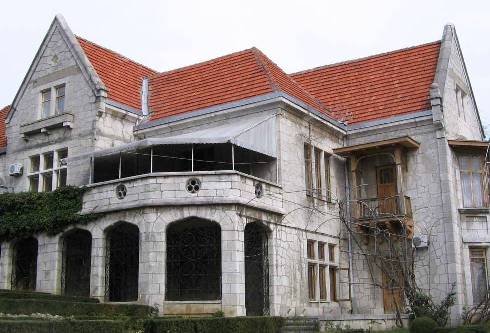Shargorod Tour
Shargorod District, as a part of Podillya historic region, has passed complicated and diverse historic pathway. Many nations have owned this Land for centuries and determined economic, social, and spiritual ways of local life. A lot of heroic and dramatic events have taken place on the territory of the Region. In XIII century the Region was an integral part of Galicia-Volyn' Principality, and the «ulus» (administrative unit) of Mongol-Tartar Golden Horde. In XIV-XVIII centuries the Land was ruled by Great Principality of Lithuania and Polish Kingdom. For ages the inhabitants of Shargorod Region managed to resist continuous raids of Tartars that ruined the settlements and captured locals to slavery. From 1672 through 1699 the Region was occupied by Ottoman Empire. For almost 130 years this Land, as a whole Right-Bank Ukraine, were integrated into Russian Empire.
The District is situated in the South-Western part of Vinnytsia Region.
There are 3 marvelous landscape parks of local significance in the area (Rakhny, Fedoriv, and Derebchyn Parks). The eye-catching sign of Shargorod Region is magnificent natural reservation «Mikhailovske» where one may admire unforgettable vegetation and take a full breath of fresh air densely saturated with wonderful scents of local herbs.
Old Shargorod, the successor of glorious past of the Land, and nowadays the administrative center of the District, straggled vast on low-grade banks of Murashka River. Here, just nearby the outlet of this calm river, began the history of this glorious and original, small and cozy Ukrainian Town of Shargorod blossoming in spring and covered gold in fall. It is a multinational town hosting many ethnic cultures with charming gardens, picturesque Jewish huts and cemeteries, Rome Catholic Churches, the Synagogue, and Greek Catholic Monastery, remains of fortress walls and Turkish bulwark. Shargorod is the unique place of Eastern Europe where on tiny territory so many different cultures have coexisted in inter-confessional and international peace for many centuries. This way of life that has always existed in Shargorod may be considered as an ideal model for the whole world.
The highest buildings of the downtown Shargorod are old Roman Catholic, Orthodox Churches, and the Synagogue built wall-in-wall. Lower part of the town looks like an outdoor museum. Despite of vivid provinciality the town has had ample services needed for comfort living: conveniently disposed stores, adequate number of drug stores, banks, ATM terminals, hospitals, etc. Numerous cozy bars, cafes, and restaurants are to the disposal of tourists. There is a children music school in the town; different folk bands and amateur art groups are also available.
First news of Shargorod refer to the late XIV century. On 5 May 1383 the Lithuanian Prince Vitovt (Vitautas) gave out a Charter for Enfeoffment to his dependant V. Karachevsky. According to this Charter the Land of contemporary Shargorod with adjacent forests subsumed to the ownership of Sir Karachevsky. The Charted said that Sir Karachevsky might have «cut down the forest and found Knyazha Luka (Prince's Place) on fresh roots». Nevertheless this area stayed poorly inhabited for a long while. Since 1447 Knyazha Luka has been noticed as Karachevska Pustosh (Waste land) owned by a Yakov Golenischev. 200 years later the territory become the property of well-known Polish Noble Sir Zamoisky and the Town of Shargorod started active development and eventually gained an importance as a local center. According to the Decree of 26 March 1579 issued by Polish King Stefan Batoriy, the King ordered Sir Zamoisky to build here a strong fortress. Newly built fortress was granted the name Shargorod to the blessed honor of the Zamoysky s ancestor Florian Shary. So circa 1585 the castle-settlement emerged here. It had the initial name Sharogrugek, and in 1589 it changed the name to contemporary one — Shargorod.
In 1595 it was captured by Cossacks headed by S. Nalivayko that turned local Polish garrison to the run.
Some battles of Bogdan Khmelnitsky took place here during the Liberation War of Ukrainian People against Polish oppression. It is known that in October 1653 Hetman of Ukraine Bogdan Khmelnitsky stayed here from where he addressed the letter to Russian Envoys.
In 1672 the town was taken by Turks. They ruled 27 years (1672-1699) and adored Shargorod that was second in size in the occupational zone. That is why they called it Kuchuk-Istanbul (Small Istanbul). In 1675 Cossack Colonel Morozenko attempted to liberate Shargorod from Turks but was completely defeated. The Turks captured Colonel, nailed him down to the town gate, thorn off his tongue, and tortured him to death. People shaped a song about the hero: «... Ah, Moroz, Morozenko, you are a brave Cossack over whom all Ukraine is weeping...».
Gaidamak (Liberation) Movement that got momentum in the Right-Bank Ukraine in 1734 was headed in the Region by Verlan, the Sotnyk (Commander) of Shargorod Cossacks.
Wandering over Shargorod Region you will definitely encounter interesting architectural and cultural signs, totally more than 120. There are three architectural monuments of national significance in Shargorod — Roman Catholic Church of Saint Florian, Orthodox Monastery of Saint Nicolas, the Synagogue, and six monuments of local significance including the family palace of Sir Zamoisky, the originator of the town. These beautiful masterpieces are concentrated within a 400-meter radius thus creating so-called historic-and-cultural center of spirituality and harmony.
In 1726 the spiritual brotherhood with the academy was founded in Shargorod. In 40-s years of XIX century the talented Ukrainian writer, folklorist, and translator Stepan Vasilyovych Rudansky (1834-1873) studied here. Brilliant Ukrainian writer Mykhailo Kotsubinsky also studied in Shargorod but a little bit later, in 70-s of XIX century. At this same Shargorod College, a teacher spoke out just leaving the teacher's room after he had read the essay wrote by young Mykhailo: «We will see our own litterateur)). He did not miss... In a little while famous Ukrainian musician, master of Ukrainian Choral Art, Mykola Dmytrovych Leontovich, the author of widely-known "Shchedryk" graduated from this College. Memorial plaques on the facade of former College recall the glorious named of brilliant graduates.
The Pearl of the Region is local Orthodox Monastery of Saint Nicolas the history of which is quite interesting. In the center of former inner yard of the monastery that occupied the upper plain of inter-river area, lifts up the glorious head of Church of Mykola (Nicholas) Mirlikiysky that could be easily observed from all points of Shargorod and adjacent highlands. Orthodox Monastery of Saint Nicolas has always been a pilgrimage destination of Orthodox believers.
Pilgrims also visit the Iosafat Valley just nearby Golynchyntsi Village. In 1923 in this area, right in the water of one of local natural springs the Blessed Virgin presented herself in all Her beauty with glowing golden nimbus, and uttered: «Praise the Christ, raise the Crosses!)) From this same day the local people, and soon people all over Ukraine have erected the Crosses over here. Of course, the Soviet power could not put up with this habit, and therefore decided to «cut off the Crosses and arrest all supporters of religious chaos...)). Many people despite of prohibition have kept visiting the local spring and obtained the relief thanks to its healing water. It has passed a couple years since the tradition to erect the Crosses in Insofar Valley resumed...
One more eye-catching feature of Shargorod is a Rome-Catholic Church of Saint Florian. Its construction was commenced concurrently with the Castle in 1585 by the Crown Chancellor of Rzeczpospolita Jan Zamoiski. Saint Florian was the tutelary saint of Zamoiskfs. His statue was erected just nearby of the entrance to the Church. It is still surprising the visitors with its sophisticated beauty.
On of the most wonderful architectural monuments of the Podil Jewish Community is the Shargorod Synagogue.
Wooden Church of the Protecting Veil of the Holy Mother of God that has stood more than 300 years in the Southern part of Lozova Village is still catching the eye of the tourists. The Church was founded in 1700 with the blessing of the Bishop of Lviv Anastasiy Sheptitsky, and dedicated by Dean of Shargorod Andriy Kovpakovich. It is a vivid masterpiece of XVIII century, and the unique example of typical Ukrainian wooden church architecture.
Fifty years later in the same Lozova Village one more church appeared (The Mykolaivska [Nicholas] Church). It was built in 1752 on the account of local congregation and Prince Lyubomirsky in the northern part of the village for another Mykolaiv parish. This is wooden, three-volume, and three-head church.
Except for exclusive architectural places of attraction, the history of this picturesque area of Podillya is abundant in outstanding personalities that were born here and created the glory of the Land with their noble deeds. This Land inspired the writers M. Kotsubinsky and S. Rudansky, the composer M. Leontovich, and brought to the world 10 Doctors of Science and 8 warlords. They were glorified in the works of Lesya Ukrainka and Marko Vovchok.
Here, in Genrikhivka Village (nowadays Rolya), Antoniy Rolle (Joseph Antony), a distinguished Polish-Ukrainian historian and writer originated from polonized French family, and psychiatrist by education, was born in 1830.
Murafa Village of Shargorod Region is a birthplace of Gersh (Andriy Mikhailovich) Budker, brilliant physicist, the Academic of the Academy of Sciences of the USSR, founder and permanent (till the end of life) director of the Institute of nuclear physics of Siberian Affiliation of the Academy of Sciences of the USSR.
If you are interested in folk traditions, it is worthy to visit this region in order to enjoy eyeing more than 100-year old Ukrainian huts, to drop into traditional Ukrainian habitat and typical Jewish residences of the past. Hospitable residents of Dzhutyn Village famous for its talented folk masters will share their experience of folk decoration of pottery and porcelain toys.
Plebanivka Village that widely scattered on both banks of Khorosha River will definitely captivate you with its profound history, interesting traditions, and eye-catching landscapes. Local people have been practiced weaving at all times. Having once got to Plebanivka one may enjoy extremely diversified patterns of stamped linens, napkins, coverlets, table-clothes, carpets, and pillows.
Local people have for long preserved the diversity of embroidery typical for the village. It is interesting to know that not only women-embroiderers but also men of the village, the plasterers, tilers, and carpenters, try to create the same patterns of cement, tiles, timber, and glass, decorating newly built houses of the villagers. These ornaments are identical only for Plebanivka inhabitants. Their houses are decorated really as «Easter eggs».
Rakhny-Lisovi Village is also rich for folk talents. It has always been famous for pottery that has been considered the main source of income for dozens of local families.
Dovzhok Village is well known for outstanding willow and straw weaver Mykhailo Petrovych Saulyak. Straw hats by Mykhailo Petrovych were ordered by famous P. Virsky National Folk Band.
One may see a lot of original masterpieces in Shargorod Museum of Regional Art (194, Lenin St.) to which the Ukrainian Commonwealth of Artists has handed over about 120 pieces of art, graphics, and statuary. Moreover, Public Museum of O. Kotsubinsky has been founded in Lopatintsy Village (stayed in the village in 1891) where the lifetime artifacts of outstanding writer — countryman have been gathered. This small village was the home for Matrona Dmytrivna Jakovysyn, an unexcelled adept of Ukrainian folk songs that recorded 152 ones. Public museum of Ukrainian Household in Strilnyki Village is situated in the premises of village administration. The Public Museum of Old Jewish Household is also open here.
Having visited the Shargorod Region, you may taste not only Ukrainian national cuisine, but also Jewish and other national cuisines. And local masters of pastry will definitely impress you. So you are kindly welcomed to Shargorod Region to make up your own impression of this picturesque and unique land and to comprehend its glorious historic past, national diversity in folk art, lifestyle, and unforgettable cuisine.
The District is situated in the South-Western part of Vinnytsia Region.
There are 3 marvelous landscape parks of local significance in the area (Rakhny, Fedoriv, and Derebchyn Parks). The eye-catching sign of Shargorod Region is magnificent natural reservation «Mikhailovske» where one may admire unforgettable vegetation and take a full breath of fresh air densely saturated with wonderful scents of local herbs.
Old Shargorod, the successor of glorious past of the Land, and nowadays the administrative center of the District, straggled vast on low-grade banks of Murashka River. Here, just nearby the outlet of this calm river, began the history of this glorious and original, small and cozy Ukrainian Town of Shargorod blossoming in spring and covered gold in fall. It is a multinational town hosting many ethnic cultures with charming gardens, picturesque Jewish huts and cemeteries, Rome Catholic Churches, the Synagogue, and Greek Catholic Monastery, remains of fortress walls and Turkish bulwark. Shargorod is the unique place of Eastern Europe where on tiny territory so many different cultures have coexisted in inter-confessional and international peace for many centuries. This way of life that has always existed in Shargorod may be considered as an ideal model for the whole world.
The highest buildings of the downtown Shargorod are old Roman Catholic, Orthodox Churches, and the Synagogue built wall-in-wall. Lower part of the town looks like an outdoor museum. Despite of vivid provinciality the town has had ample services needed for comfort living: conveniently disposed stores, adequate number of drug stores, banks, ATM terminals, hospitals, etc. Numerous cozy bars, cafes, and restaurants are to the disposal of tourists. There is a children music school in the town; different folk bands and amateur art groups are also available.
First news of Shargorod refer to the late XIV century. On 5 May 1383 the Lithuanian Prince Vitovt (Vitautas) gave out a Charter for Enfeoffment to his dependant V. Karachevsky. According to this Charter the Land of contemporary Shargorod with adjacent forests subsumed to the ownership of Sir Karachevsky. The Charted said that Sir Karachevsky might have «cut down the forest and found Knyazha Luka (Prince's Place) on fresh roots». Nevertheless this area stayed poorly inhabited for a long while. Since 1447 Knyazha Luka has been noticed as Karachevska Pustosh (Waste land) owned by a Yakov Golenischev. 200 years later the territory become the property of well-known Polish Noble Sir Zamoisky and the Town of Shargorod started active development and eventually gained an importance as a local center. According to the Decree of 26 March 1579 issued by Polish King Stefan Batoriy, the King ordered Sir Zamoisky to build here a strong fortress. Newly built fortress was granted the name Shargorod to the blessed honor of the Zamoysky s ancestor Florian Shary. So circa 1585 the castle-settlement emerged here. It had the initial name Sharogrugek, and in 1589 it changed the name to contemporary one — Shargorod.
In 1595 it was captured by Cossacks headed by S. Nalivayko that turned local Polish garrison to the run.
Some battles of Bogdan Khmelnitsky took place here during the Liberation War of Ukrainian People against Polish oppression. It is known that in October 1653 Hetman of Ukraine Bogdan Khmelnitsky stayed here from where he addressed the letter to Russian Envoys.
In 1672 the town was taken by Turks. They ruled 27 years (1672-1699) and adored Shargorod that was second in size in the occupational zone. That is why they called it Kuchuk-Istanbul (Small Istanbul). In 1675 Cossack Colonel Morozenko attempted to liberate Shargorod from Turks but was completely defeated. The Turks captured Colonel, nailed him down to the town gate, thorn off his tongue, and tortured him to death. People shaped a song about the hero: «... Ah, Moroz, Morozenko, you are a brave Cossack over whom all Ukraine is weeping...».
Gaidamak (Liberation) Movement that got momentum in the Right-Bank Ukraine in 1734 was headed in the Region by Verlan, the Sotnyk (Commander) of Shargorod Cossacks.
Wandering over Shargorod Region you will definitely encounter interesting architectural and cultural signs, totally more than 120. There are three architectural monuments of national significance in Shargorod — Roman Catholic Church of Saint Florian, Orthodox Monastery of Saint Nicolas, the Synagogue, and six monuments of local significance including the family palace of Sir Zamoisky, the originator of the town. These beautiful masterpieces are concentrated within a 400-meter radius thus creating so-called historic-and-cultural center of spirituality and harmony.
In 1726 the spiritual brotherhood with the academy was founded in Shargorod. In 40-s years of XIX century the talented Ukrainian writer, folklorist, and translator Stepan Vasilyovych Rudansky (1834-1873) studied here. Brilliant Ukrainian writer Mykhailo Kotsubinsky also studied in Shargorod but a little bit later, in 70-s of XIX century. At this same Shargorod College, a teacher spoke out just leaving the teacher's room after he had read the essay wrote by young Mykhailo: «We will see our own litterateur)). He did not miss... In a little while famous Ukrainian musician, master of Ukrainian Choral Art, Mykola Dmytrovych Leontovich, the author of widely-known "Shchedryk" graduated from this College. Memorial plaques on the facade of former College recall the glorious named of brilliant graduates.
The Pearl of the Region is local Orthodox Monastery of Saint Nicolas the history of which is quite interesting. In the center of former inner yard of the monastery that occupied the upper plain of inter-river area, lifts up the glorious head of Church of Mykola (Nicholas) Mirlikiysky that could be easily observed from all points of Shargorod and adjacent highlands. Orthodox Monastery of Saint Nicolas has always been a pilgrimage destination of Orthodox believers.
Pilgrims also visit the Iosafat Valley just nearby Golynchyntsi Village. In 1923 in this area, right in the water of one of local natural springs the Blessed Virgin presented herself in all Her beauty with glowing golden nimbus, and uttered: «Praise the Christ, raise the Crosses!)) From this same day the local people, and soon people all over Ukraine have erected the Crosses over here. Of course, the Soviet power could not put up with this habit, and therefore decided to «cut off the Crosses and arrest all supporters of religious chaos...)). Many people despite of prohibition have kept visiting the local spring and obtained the relief thanks to its healing water. It has passed a couple years since the tradition to erect the Crosses in Insofar Valley resumed...
One more eye-catching feature of Shargorod is a Rome-Catholic Church of Saint Florian. Its construction was commenced concurrently with the Castle in 1585 by the Crown Chancellor of Rzeczpospolita Jan Zamoiski. Saint Florian was the tutelary saint of Zamoiskfs. His statue was erected just nearby of the entrance to the Church. It is still surprising the visitors with its sophisticated beauty.
On of the most wonderful architectural monuments of the Podil Jewish Community is the Shargorod Synagogue.
Wooden Church of the Protecting Veil of the Holy Mother of God that has stood more than 300 years in the Southern part of Lozova Village is still catching the eye of the tourists. The Church was founded in 1700 with the blessing of the Bishop of Lviv Anastasiy Sheptitsky, and dedicated by Dean of Shargorod Andriy Kovpakovich. It is a vivid masterpiece of XVIII century, and the unique example of typical Ukrainian wooden church architecture.
Fifty years later in the same Lozova Village one more church appeared (The Mykolaivska [Nicholas] Church). It was built in 1752 on the account of local congregation and Prince Lyubomirsky in the northern part of the village for another Mykolaiv parish. This is wooden, three-volume, and three-head church.
Except for exclusive architectural places of attraction, the history of this picturesque area of Podillya is abundant in outstanding personalities that were born here and created the glory of the Land with their noble deeds. This Land inspired the writers M. Kotsubinsky and S. Rudansky, the composer M. Leontovich, and brought to the world 10 Doctors of Science and 8 warlords. They were glorified in the works of Lesya Ukrainka and Marko Vovchok.
Here, in Genrikhivka Village (nowadays Rolya), Antoniy Rolle (Joseph Antony), a distinguished Polish-Ukrainian historian and writer originated from polonized French family, and psychiatrist by education, was born in 1830.
Murafa Village of Shargorod Region is a birthplace of Gersh (Andriy Mikhailovich) Budker, brilliant physicist, the Academic of the Academy of Sciences of the USSR, founder and permanent (till the end of life) director of the Institute of nuclear physics of Siberian Affiliation of the Academy of Sciences of the USSR.
If you are interested in folk traditions, it is worthy to visit this region in order to enjoy eyeing more than 100-year old Ukrainian huts, to drop into traditional Ukrainian habitat and typical Jewish residences of the past. Hospitable residents of Dzhutyn Village famous for its talented folk masters will share their experience of folk decoration of pottery and porcelain toys.
Plebanivka Village that widely scattered on both banks of Khorosha River will definitely captivate you with its profound history, interesting traditions, and eye-catching landscapes. Local people have been practiced weaving at all times. Having once got to Plebanivka one may enjoy extremely diversified patterns of stamped linens, napkins, coverlets, table-clothes, carpets, and pillows.
Local people have for long preserved the diversity of embroidery typical for the village. It is interesting to know that not only women-embroiderers but also men of the village, the plasterers, tilers, and carpenters, try to create the same patterns of cement, tiles, timber, and glass, decorating newly built houses of the villagers. These ornaments are identical only for Plebanivka inhabitants. Their houses are decorated really as «Easter eggs».
Rakhny-Lisovi Village is also rich for folk talents. It has always been famous for pottery that has been considered the main source of income for dozens of local families.
Dovzhok Village is well known for outstanding willow and straw weaver Mykhailo Petrovych Saulyak. Straw hats by Mykhailo Petrovych were ordered by famous P. Virsky National Folk Band.
One may see a lot of original masterpieces in Shargorod Museum of Regional Art (194, Lenin St.) to which the Ukrainian Commonwealth of Artists has handed over about 120 pieces of art, graphics, and statuary. Moreover, Public Museum of O. Kotsubinsky has been founded in Lopatintsy Village (stayed in the village in 1891) where the lifetime artifacts of outstanding writer — countryman have been gathered. This small village was the home for Matrona Dmytrivna Jakovysyn, an unexcelled adept of Ukrainian folk songs that recorded 152 ones. Public museum of Ukrainian Household in Strilnyki Village is situated in the premises of village administration. The Public Museum of Old Jewish Household is also open here.
Having visited the Shargorod Region, you may taste not only Ukrainian national cuisine, but also Jewish and other national cuisines. And local masters of pastry will definitely impress you. So you are kindly welcomed to Shargorod Region to make up your own impression of this picturesque and unique land and to comprehend its glorious historic past, national diversity in folk art, lifestyle, and unforgettable cuisine.
Tourist Vinnychyna. Ethnography Guide. Comp. of ukrainian text O. Kizian

